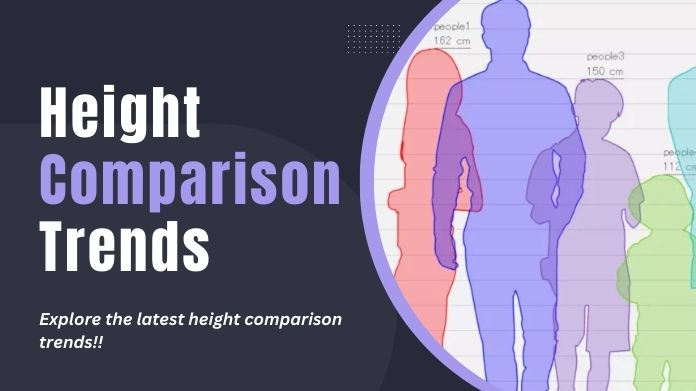In the expansive landscape of social media, trends ebb and flow, capturing users’ attention with a unique blend of creativity, relatability, and, sometimes, a touch of humor.
One intriguing phenomenon recently gaining momentum is the proliferation of height-related content like height comparison trends. From viral challenges to celebrity comparisons, the online community has found a new fascination with exploring and sharing height differences.
This article delves into the fascinating domain of “Height Comparison Trends,” dissecting what’s buzzing on social media and uncovering the various facets contributing to this unique genre’s popularity.
In a world where trends often dictate the narrative of online interactions, the way individuals perceive and present their height has become a dynamic and engaging topic.
From playful challenges on platforms like TikTok to thoughtful reflections on body image, users navigate the virtual tape measure with curiosity and enthusiasm.
Join us on a journey through the digital landscapes where height comparisons thrive, and discover the trends shaping conversations around stature, perspective, and the social dynamics of being tall, short, or somewhere in between.
Concept of Height Comparison

The concept of height comparison refers to comparing the heights of two or more objects or individuals. It is a way to determine the relative height difference between these entities.
Height comparison can be done using various methods, such as measuring with a measuring tape or ruler, visually comparing by eye, or using specialized instruments like laser height detectors.
Height comparison is commonly used in various fields and situations. In architecture and construction, it is essential to compare the heights of different structures to ensure they are built to the correct specifications.
In sports, height comparison is often used to analyze the physical attributes of athletes and determine their advantages or disadvantages in specific sports.
Height comparison is also relevant in everyday life. People often compare their height to others, whether out of curiosity or to establish a sense of self-perception.
Height is often associated with specific characteristics or stereotypes, such as tall people being seen as more authoritative or short people being perceived as cute or approachable.
What’s Height Comparison Trends?

Height comparison trends refer to the growing popularity of content on social media platforms that revolves around comparing and discussing height.
These trends can take various forms, ranging from light-hearted challenges to more thoughtful discussions about body image and societal perceptions of height.
Users on platforms like TikTok, Instagram, and Twitter engage in these trends by sharing content related to their height, comparing their height to others, participating in challenges, and exploring the diverse aspects of height perception.
Some common elements of height comparison trends include:
- Challenges and Viral Trends: Users participate in challenges that involve comparing their height to others, often using creative and entertaining methods. These challenges can go viral and spread across social media platforms.
- Celebrity Height Comparisons: People may compare their height to that of celebrities, exploring how they measure up to well-known figures in the public eye.
- Height Percentiles: Some trends involve users sharing their height percentiles, contributing to discussions about average heights and variations in the population.
- Height-Related Discussions: Users may engage in discussions about the impact of height on self-esteem, body image, and societal expectations.
- Use of Height Comparison Apps: There’s a growing interest in apps and tools designed for height comparison, allowing users to measure and compare their height virtually.
Overall, height comparison trends reflect how people engage with and explore the concept of height on social media, combining entertainment, self-expression, and societal reflection.
Final Note
In conclusion, the world of social media continues to evolve, and height comparison trends have emerged as a captivating and dynamic phenomenon.
As users engage in challenges, share their height-related experiences, and participate in discussions about body image and societal expectations, the digital tape measure has woven its way into the fabric of online conversations.
As we navigate the ever-changing landscape of social media trends, it becomes clear that the fascination with height is not merely about measurement but a reflection of the rich tapestry of human experiences, perspectives, and the innate desire for connection.
In this buzzing corner of the digital world, users find common ground, celebrate differences, and engage in conversations that transcend physical stature, creating a virtual community bound by the curiosity of exploring heights like never before.






